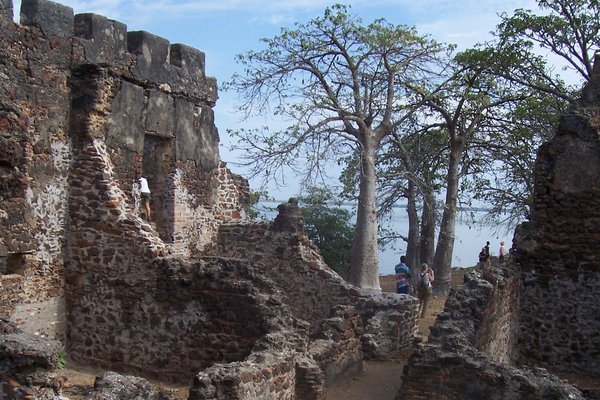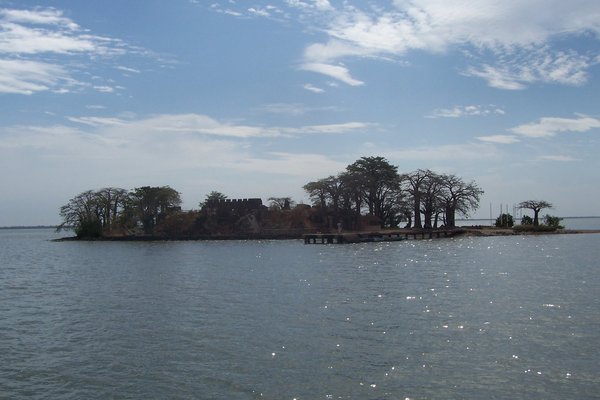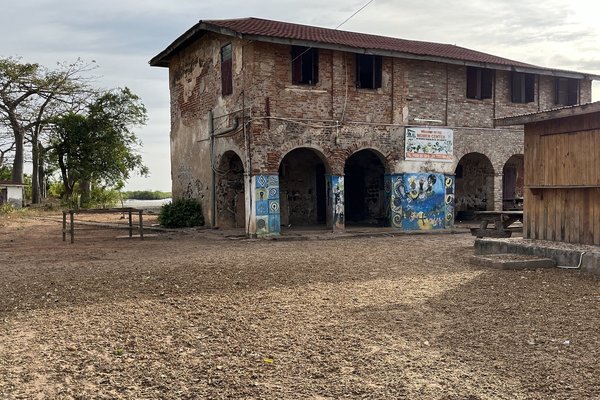Gambia
Kunta Kinteh Island
Kunta Kinteh Island and Related sites represent the first African-European trade route to the inland of Africa and the beginning and the conclusion of the West African slave trade.
The Portuguese built a fort here at the mouth of the River Gambia in 1456 to control the hinterland and exploit its riches. The designated area comprises 7 locations: James Island, Six-Gun Battery, Fort Bullen, Ruins of San Domingo, Remains of Portuguese Chapel, CFAO Building, and Maurel Frères Building.
Community Perspective: available as a set day trip by river cruise from Banjul, capitalizing on the (fictional) story of the ‘Roots’ book and mini-series. Ian found most of the related sites in ruins and Squiffy remarks on the only tenuous link with the slave trade some of the buildings have, “but it is still a story that needs to be told to underline the human impact.“ Els provides an overview of the state of 6 of the locations in 2025.
Site Info
Official Information
- Full Name
- Kunta Kinteh Island and Related Sites (ID: 761)
- Country
- Gambia
- Status
-
Inscribed 2003
Site history
History of Kunta Kinteh Island
- 2011: Name change
- From "James Island and Related Sites" to: Kunta Kinteh Island and Related Sites
- 2003: Revision
- Includes Former TWHS Fort Bullen (1996)
- 2003: Inscribed
- Inscribed
- 1996: Deferred
- Bureau - want comparative study of early colonial trading settlements in West Africa
- Type
- Cultural
- Criteria
- iii
- vi
Links
- UNESCO
- whc.unesco.org
- Official
-
- ncac.gm — National Centre for Arts and Culture
All Links
UNESCO.org
- whc.unesco.org — whc.unesco.org/
Official Website
- ncac.gm — National Centre for Arts and Culture
Community Information
- Community Category
- Human activity: Transport and Trade
Travel Information
Recent Connections
-
Named after individual people
"Kunta Kinte (sic)- the fictional, or p… -
Name changes
From "James Island" (2011) -
Built in the 19th Century
6 Gun Battery and Fort Bullen were buil…
Connections of Kunta Kinteh Island
- Individual People
-
-
Sir Robert Holmes
"Up-river, on St. Andreas Island near Jillifri, he (Robert Holmes) then captured a fort which was nominally the Duke of Courland's, but obviously in Dutch hands, and renamed the spit of land James Island". (Wiki)
-
- Geography
-
-
Gambia River Basin
Situated in the mouth, on the banks and on an island in the River Gambia -
Located in a Capital City
Banjul (Capital of Gambia): Six-gun battery component
-
- Trivia
-
-
Built or owned by Portuguese
The Chapel in Albreda, built by the Portuguese in the late 15th century (AB ev) -
Cultural sites taking up an entire island
The 7 components include Kunta Kinteh Island, an island in the Gambia River -
Built or owned by French
"Albreda, probably another Portuguese settlement, was rented to French traders in 1681. It became the location of the French comptoir in The Gambia. Albreda and San Domingo served as the main trading outlets of the Kingdom of Niumi, and were the westernmost terminus of the long-distance trade routes from the interior. At the demand of the English, the site was abandoned by the French in 1857, but they came back, seen in the remains of two French trading company buildings, Maurel Frères and CFAO" (AB ev) -
Built or owned by British
Fort Bullen and other constructions dating from the British colonial rule of The Gambia -
Built or owned by Dutch
The Dutch briefly held the fort from 1659 until the British captured it in 1661.
-
- Damaged
-
-
Islands threatened by inundation
"James Island is suffering heavy erosion, and is now approximately 1/6 of its size during the times of the fort" (Wiki)
-
- World Heritage Process
-
-
Slow Starters
1987-2003 : 16 years -
First inscriptions
Gambia 2003 -
Extensions on Tentative List
Historic Georgetown -
Derived from more than one TWHS
Includes Former TWHS James Island and Fort Bullen -
Need for a Comparative Study
Bureau - want comparative study of early colonial trading settlements in West Africa - no reference found that it took place
-
- Human Activity
-
-
Slavery
"directly and tangibly associated with the beginning and the conclusion of the slave trade, retaining its memory related to the African Diaspora." (crit vi OUV), "Furthermore, the Six-Gun Battery and Fort Bullen were constructed with the express intent of thwarting the slave trade once it had become illegal." (AB ev)
-
- Constructions
-
-
Cemeteries
San Domingo component: "remains of the former English settlement of Jillifree, apart from the ruins of a two-storey stone house. The sites of two or three further houses are marked by piles of stones and the cemetery is covered by undergrowth" (AB ev) -
Cisterns
Kunta Kinteh Island: "a large stone cistern for collecting rainwater was built up against the outside face of the curtain wall." (AB ev)
-
- WHS on Other Lists
-
-
World Monuments Watch (past)
(1998) -
World Biosphere Reserves
Niumi Biosphere Reserve (Gambia) - "Notably, the biosphere reserve encompasses a Ramsar wetland and the UNESCO World Heritage site Kunta Kinteh Island, historically known as a place where enslaved peoples were held before being transported to the Americas during the 16th and 17th centuries."
-
- Timeline
-
-
Built in the 19th Century
6 Gun Battery and Fort Bullen were built in 1816 and 1826 "with the specific intent of thwarting the slave trade once it had become illegal in the British Empire after the passing of the Abolition Act in 1807." (AB eval)
-
- WHS Names
-
-
Named after individual people
"Kunta Kinte (sic)- the fictional, or possibly genuine, Mandinka slave ancestor of Alex Haley as described in "Roots - the Saga of an American Family" -
Name changes
From "James Island" (2011)
-
News
No news.
Recent Visitors
Visitors of Kunta Kinteh Island
- Adrian Turtschi
- Alexander Barabanov
- Ali Zingstra
- A. Mehmet Haksever
- Ask Gudmundsen
- Atila Ege
- Bodil Ankerly
- Bram de Bruin
- Dorejd
- Els Slots
- fedemarch92
- frizzle
- George Gdanski
- GerhardM
- Iain Jackson
- Ian Cade
- Janos
- Jarek Pokrzywnicki
- jonathanfr
- Joyce van Soest
- kiank37
- Loic Pedras
- Luis Filipe Gaspar
- Maciej Gil
- Mariam
- Michael Novins
- Morodhi
- Nihal Ege
- Olli-Pekka Turunen
- Philipp Leu
- Pink Bunny
- Piotr Wasil
- Reisedachs
- Roger Ourset
- Roman Bruehwiler
- Sandmann15
- Solivagant
- Squiffy
- Stanislaw Warwas
- Szabolcs Mosonyi
- Szucs Tamas
- Thomas Buechler
- Thomas van der Walt
- tony0001
- Vanessa Buechler
Community Reviews
Show full reviews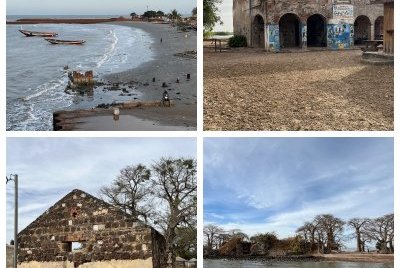
Named after the fictional character Kunta Kinteh that featured in the novel and TV series Roots, the title of this WHS suggests that this is primarily a slavery memorial site. But it actually comprises 7 components that put the African-European encounter at and along the River Gambia into historical perspective. Since that river is Gambia’s sole raison d’etre, it is a well-chosen WHS to represent the country.
The mouth of the Gambia River is flanked by two late 19th-century British forts and is best experienced from the Barra ferry. I took this ferry twice, once from the North Bank to the South and once the other way around. It’s a great introduction to the country for just 35 Dalaisi (0.50 EUR). Nowadays, crossings take 25-30 minutes since they put a new engine into the last ferryboat remaining last year. Although I had to wait over 1.5 hours for one to leave at the Barra side, I forgot to check out the fort (Fort Bullen) from up close. The dusty surroundings and chaotic traffic are not very inviting. At the Banjul side, I tried to walk to the Six Gun Battery, but access to it seemed blocked by the presence of the heavily guarded State House next door. Both forts can be seen from the ferry though and are very small. It’s the width of the river that is the most impressive.
A day later, I travelled further inland with my driver+guide for another hour to …
Keep reading 0 comments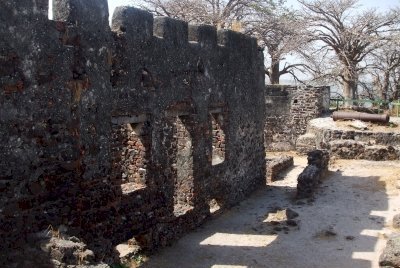
The Lady Jaclene, out of Ramsgate, pushed slowly up the river, red ensign flapping in the hot salt-scented breeze. The River Gambia here was so wide I could see nothing of land save for a hazy grey-blue smear on the horizon on either side. Time crept past. I felt adrift in a strange land with no way to get my bearings. Then, around noon, a smudge in the river ahead began to come into focus, resolving itself slowly into the outline of a speck of land. The skeletal outlines of trees rose above the skeletal outlines of a low stone fort, its ramparts crenellated like the teeth of a jaw, its empty windows staring out sightlessly towards the African mainland. Anyone who knows their Joseph Conrad would have had the exact same words form in their head as I did: “And this also has been one of the dark places of the earth…”
Kunta Kinteh Island and its related sites is the easiest of The Gambia’s two World Heritage Sites to visit. It is the furthest downstream, making it the nearest to the tourist resorts of the Atlantic coast. And it is widely available as a set day trip. We booked for the following day via a tourist agency on the Senegambia Strip. It is commonly referred to as the ‘Roots’ tour, after Alex Haley’s book chronicling the abduction of a young man – Kunta Kinteh – from his village of Juffureh, his enslavement, his shipment via James …
Keep reading 0 comments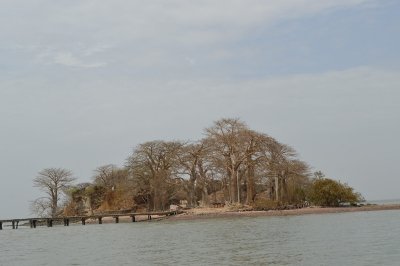
Having spent five days in The Gambia in early June 2018, it’s easy to appreciate why the smallest nation on the African continent has been nicknamed The Smiling Coast of Africa. I organized two full-day tours with Arch Tours. Since I traveled during shoulder season, I wasn't able to join group tours, so Arch Tours graciously charged me the same price for an individual tour as I would have paid for a group tour -- and traveling in June allowed me to have each site to myself. Each tour company runs a variation of a tour to visit several sites in one day. On Arch's Four Tours in One Day, I visited Serekunda Market, the country's largest (although I later visited Albert Market in Banjul, which seems just as large, better organized and more photogenic); Kachikally Crocodile Pool, a popular destination for women struggling with getting pregnant, who come from around The Gambia to douse themselves in its supposedly curative water; Abuko Livestock Market, the largest cattle, sheep and goat market in The Gambia; and a fishing beach, where the daily catch is smoked or salted under the hot sun.
In 1976, Alex Haley published Roots: The Saga of an American Family, where he traces his genealogy back to Kunta Kinte and The Gambia. According to Haley, Kunta Kinte was born around 1750 in the village of Jufureh on the north bank of the River Gambia. Since the success of the 1977 miniseries, Jufureh has …
Keep reading 0 comments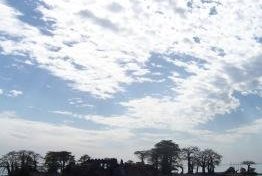
Our last full day in the Gambia was spent on a very interesting river cruise that took us to James Island. The island itself is quite small and getting smaller all the time. Erosion by the river has already shrunk the island considerably since the fort became derelict with the outlying buildings all but gone. There are some efforts to protect the banks of the island but the erosion does seem like a very real and pressing concern for the people trying to protect it. The remains of the fort are reasonably substantial; however the British bombarded the fort when they stopped using it so it is in ruins.
The island was used as a holding pen for captured slaves before they were transported to Gorée in Senegal and then onwards to the Americas. It was an incredibly small area that was set aside for the slaves; however the Barracks in which they were held was the first to be washed away by the encroaching river. Therefore whilst it is still quite a harrowing site the full gravitas is somewhat lost as you can’t see the conditions in which they were held. The one complete room that is left on the island is commonly referred to as the slave dungeon, it seem that this wasn’t the case and it was a store room, however it is very indicative of what the barracks would have looked like so gives some idea of the miserable conditions.
The ‘associated sites’ that are also …
Keep reading 0 comments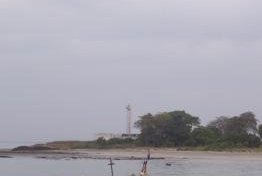
As Paul states this is a bit of an oddity. It is already inscribed as one of the "Associated sites" of the James Island WHS.
It is located in Barra, which sits opposite the capital Banjul and is connected by a very busy ferry route. The fort is located a short distance from the ferry port but the road is quite poor and very sandy so it is tough to get nearby motorised transport, so it is probably best to approach on foot is you have a wait for the ferry. There is not a huge amount to see at the fort just the old walls and a few scattered cannon.
This actually is really good addition to the James Island site. It transforms this from being just a holding pen for slaves into one that shows the evolution of the Slave Trade and also the battle to control and eradicate it. Fort Bullen was built in 1827 at a similar time to the six gun battery in Banjul. This enabled the British to control ships coming in and out of the River Gambia and help to enforce the abolition of the slave trade. Whilst Fort Bullen is not a massively impressive site its incorporation into the Wider James Island WHS helps to illustrate the evolution of slavery on the River Gambia.
Keep reading 0 comments
